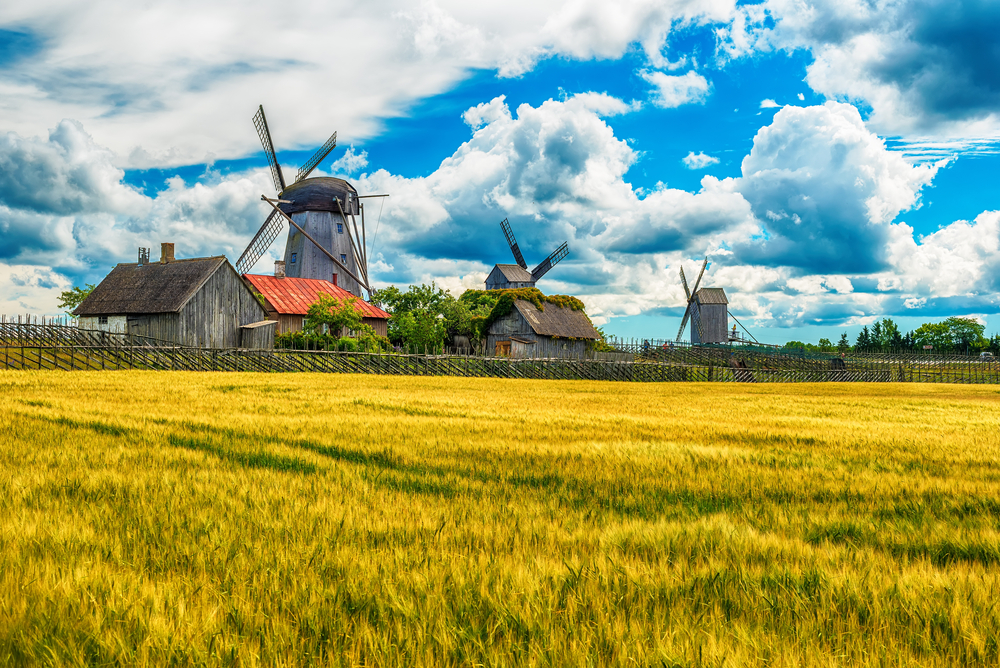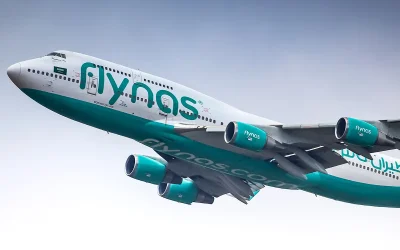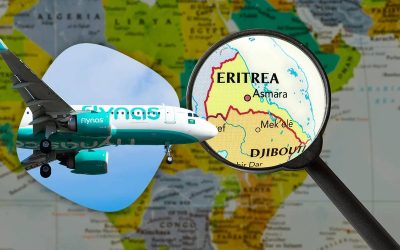This article is reviewed regularly by Wego’s editorial team to ensure that the content is up to date & accurate.
Updated January 2022
Table of Contents
The origin of the travel bubble
The advent of coronavirus has brought forth an unprecedented and multifaceted crisis, as the world witnessed global shares taking a hit, the unemployment rate skyrocketing and oil prices come crashing down. As the threat of a global recession looms, it’s no exaggeration to say that the world economy, in general, is currently in dire straits.

With passengers cancelling their holiday and business trips due to airlines being grounded and borders being closed, the travel industry is among the hardest hit by the onslaught and is now facing seemingly insurmountable odds.
Tourism makes for a considerable percentage of any country’s yearly GDP, and to lose such a significant chunk of the pie has proven to be quite damaging. Thus, governments worldwide are struggling to find ingenious ways to somewhat restore the inbound cash flow streams associated with international tourism and travel, which in turn brings us to a little something called the ‘travel bubble.’
What’s a travel bubble?

Angla windmills in Leishi Parish, Estonia.
Travel bubbles, also known as travel corridors and corona corridors, are essentially an exclusive partnership between two or more countries that have demonstrated considerable success in containing and combating the COVID-19 pandemic within their respective borders.
These countries then go on to re-establish connections between them by opening up borders and allowing people to travel freely within the zone without having the need to undergo on-arrival quarantine.
What are the existing travel bubbles?
Note: not an exhaustive list. This section will continually be updated as more travel bubbles are confirmed.
When the world became aware of this initiative, many began to follow suit, or at the very least, seriously considering the possibility of forming a bloc with their neighbouring countries. Most countries generally view the travel bubble concept as something that would entail business recoveries across multiple sectors.
Over the past two years, travel bubbles have come and gone as the pandemic ebbs and flows. The following is our updated list of travel bubbles between countries that are currently still operational.
In addition to the list of existing travel bubbles, we’ve also provided dedicated pages for Covid Test For Travel In 2022 (All Countries) and Quarantine Guidelines For Travel In 2022 (All Countries).

Old Nyhavn port Copenhagen, Denmark.
Europe
EU – Third Countries
The EU has published a list of third countries to which their residents may enter the Schengen Area. However, the list is merely a recommendation to which member states are entitled to accept or reject. As of 28th October 2021, the list of third countries includes the following:
- Bahrain
- Chile
- China (subject to confirmation of reciprocity)
- Colombia
- Indonesia
- Kuwait
- New Zealand
- Qatar
- Peru
- Rwanda
- Saudi Arabia
- South Korea
- United Arab Emirates
- Uruguay
The list also acknowledges the two special administrative regions of China: Hong Kong and Macao.
Germany – Exempted Countries
Germany has issued an official list of exempted countries and has established travel corridors with the following countries and territories.
- Hong Kong
- Indonesia
- Macao
- New Zealand
- South Korea
- Taiwan
In addition, the list will be expanded to include
- China (as soon as the possibility of mutual entry is confirmed).
Additionally, German and EU citizens, Liechtenstein, Switzerland, Norway and Iceland and the members of their immediate family (spouses, children under 18, parents of children under 18) are exempted from the travel restrictions.
Asia – Pacific
Cook Islands – New Zealand
Quarantine-free travel between New Zealand and the Cook Islands (and vice versa) has been reinstated. The requirements are as follows:
New Zealand to Cook islands
- travellers must be fully vaccinated. This generally means 14 days after their final dose. At the moment, only people aged 12 and over can travel to the Cook Islands
- travellers must get a negative pre-departure test. The test must have been taken within 48 hours before you depart
- travellers must spend a full 10 days before their date of departure in either New Zealand or the Cook Islands. This means travellers can travel from day 11 onwards.
Cook Islands to New Zealand
To travel to New Zealand on a quarantine-free flight, you must meet the following criteria:
- travellers must have spent 14 full days before the date of departure in either New Zealand or the Cook Islands. This means travel is allowed from day 15 onwards
- travellers must not have had a positive COVID-19 test in the 14 days before departure. If this is the case, the travellers must have a piece of written advice from a health practitioner stating that they are no longer infectious. Travellers must also not be waiting for the results of a COVID-19 test taken in the past 14 days
- if not a New Zealand citizen, travellers must be fully vaccinated
- travellers must complete a travel declaration before departure and must answer some questions about their health
Niue – New Zealand
One way, quarantine-free travel is available from Niue to Auckland.
To be eligible to book ‘Quarantine-free’ flights – you must:
- You have not been overseas outside of Niue and New Zealand in the past 14 days.
- You have not had contact with a confirmed COVID-19 case within the past 14 days.
- You must maintain 2 metres physical distance (as much as possible) from anyone in the New Zealand airport who did not arrive from Niue.
- You must wear a face mask while in the airport in New Zealand.
- There are no reasonable grounds, as determined by a suitably qualified health practitioner, to suspect you may have COVID-19. This may include:
- having had contact with a confirmed case of COVID-19 in the past 14 days
- having any COVID-19 symptoms, and
- waiting for a COVID-19 test result
New Zealand – Samoa, Tokelau, Vanuatu and Tonga
Residents of Samoa, Tokelau, Tonga, and Vanuatu are able to travel to New Zealand without needing to enter a managed isolation facility.
Individuals from Samoa, Tokelau, Tonga, and Vanuatu eligible to enter New Zealand are:
- New Zealand citizens
- holders of a New Zealand resident visa
- holders of a critical purpose visa.
If you want to visit New Zealand without being quarantined, you must satisfy the following requirements:
- Travellers coming from Tokelau need to spend 14 full days before their departure in Tokelau, Samoa or New Zealand.
- Travellers from Samoa, Tonga and Vanuatu need to spend 14 full days before their date of departure in either your country of departure or New Zealand. This means you can travel from day 15 onwards.
- You have not had contact with a confirmed COVID-19 case within the past 14 days.
- Complete the Nau Ma Rā (Travel Declaration)
- There are no reasonable grounds, as determined by a suitably qualified health practitioner, to suspect you may have COVID-19. This may include:
- having had contact with a confirmed case of COVID-19 in the past 14 days
- having any COVID-19 symptoms, and
- waiting for a COVID-19 test result.
Singapore – Countries Under the Green/Fast Lane arrangement and Air Travel Pass
Travel bubbles have come and burst, but Singapore finally has its own fast track to quarantine-free travel. The government of Singapore is allowing entry for the following purposes of travel:
The Vaccinated Travel Lanes (VTL) are allowing travellers from Australia, Brunei Darussalam, Cambodia, Canada, Denmark, Fiji, Finland, France, Germany, India, Indonesia, Italy, Malaysia, Maldives, the Netherlands, the Republic of Korea, Spain, Sri Lanka, Sweden, Switzerland, Thailand, Turkey, the United Kingdom, and the United States to enter Singapore without serving a stay-home notice.
Short term business visits
Travellers who need to only make a short-term business trip to Singapore may use the lanes below. Only travellers with travel history to the listed countries/regions before arriving in Singapore may use the respective lanes.
- Hong Kong
- Macao
- Mainland China (excluding Jiangsu province)
- Taiwan
- Brunei Darussalam
- Mainland China (Only for travellers from Chongqing, Guangdong, Jiangsu, Shanghai, Tianjin and Zhejiang)
Short-term visits by foreigners are currently only allowed for countries/regions with a low risk of COVID-19 importation. Foreign travellers who are short-term travellers with travel history in the past 21 days to the following countries/regions only, may use the lanes below.
- Hong Kong
- Macao
- Mainland China (excluding Jiangsu province)
- Taiwan
Following an increase in COVID transmissions, new entry approvals have been reduced or halted until further notice for all long-term pass holders with travel history to higher-risk countries/regions (i.e. all countries/regions, except Brunei, Hong Kong, Macao, Mainland China (excluding Jiangsu province), New Zealand and Taiwan).
South Korea – Saipan
The governments of South Korea and the Commonwealth of the Northern Mariana Islands have officially established a travel bubble between the two nations aimed at boosting tourism to the Pacific territory.
The travel bubble will allow fully vaccinated nationals, foreign nationals and permanent residents to travel between the two countries provided they have received their final COVID-19 vaccine dose at least two weeks prior to departure and present a negative COVID-19 test acquired within the previous three days. The vaccine must also be approved by both governments, with Pfizer, Moderna, Janssen and AstraZeneca all acceptable.
The flights, serving group tours between Seoul Incheon International Airport and Saipan International Airport, must be direct and conducted by their respective national carriers.
South Korea – Palau
Travellers from South Korean tourists can freely travel to Palau, an island country in the western Pacific Ocean.
The two countries have established a travel bubble from November of last year.
Vanuatu – New Caledonia (Tamtam Bubble)
Vanuatu’s prime minister has announced the creation of a safe travel bubble between Vanuatu and New Caledonia. From April, the so-called “Tamtam Bubble” will allow easier travel between the Covid-free Melanesian neighbours. Travel will be restricted to Vanuatu’s main island of Efate.
However, the bubble is currently on hold as reports of new coronavirus cases emerged in both countries.
India – a list of countries
The government of India has established travel bubbles with a list of countries. These bubbles are reciprocal in nature; meaning airlines from both countries enjoy similar benefits. The countries on the list are as follows:
- Afghanistan
- Australia
- Bahrain
- Bangladesh
- Bhutan
- Canada
- Ethiopia
- Finland
- France
- Germany
- Iraq
- Japan
- Kazakhstan
- Kenya
- Kuwait
- Maldives
- Mauritius
- Nepal
- Netherlands
- Nigeria
- Oman
- Qatar
- Russia
- Rwanda
- Saudi Arabia
- Seychelles
- Singapore
- Sri Lanka
- Switzerlans
- Tanzania
- Ukraine
- UAE
- UK
- USA
- Uzbekistan
Note that travellers allowed to partake in these travel bubbles are the following:
- stranded Indian nationals
- all Overseas Citizen of India (OCI) cardholders and Person of Indian Origin (PIO) cardholders holding passports of any country
- foreign nationals (including diplomats) holding a valid Indian visa as per extant guidelines
The Middle East and North Africa
The UAE – Bahrain, Greece, Seychelles, Serbia
The UAE has set up vaccine bubbles with Bahrain, Greece, Seychelles, and Serbia. The safe travel bubbles are meant for travellers who have been fully vaccinated against COVID-19. The arrangement signifies the mutual recognition of vaccination certificates issued by their respective health authorities and will allow travellers to enjoy trips without managed isolation.
The UAE – the Maldives
A possible travel bubble between the UAE and the Maldives is purportedly in the works. Although no official dates have been revealed, it is hoped that the travel corridor will be established in early June. Fully vaccinated travellers should be able to take advantage of the arrangement once it’s been officially implemented.
The UAE – Italy
The UAE and Italian authorities have decided to safely re-open the bilateral travel corridor for all categories of passengers between the two countries and end the quarantine requirement.
With the establishment of the travel bubble, travellers coming from the UAE to the Italian airports at Rome/Fiumicino, Venice/Marco Polo and Milan/Malpensa will be allowed to travel to Italy for all purposes.
Travel bubbles and the future of travel
Although travel bubbles are far from being the ideal solution, it is undoubtedly a step in the right direction. As more and more of these sky bridges pop up, we can be sure that countries worldwide are doing a great job in flattening the curve.
For now, these travel bubbles have proven to be a boon for those looking to get their economies back on track. For us travellers, let us take comfort in the fact that travel bubbles are a telltale sign that we may soon be able to once again explore the world.












